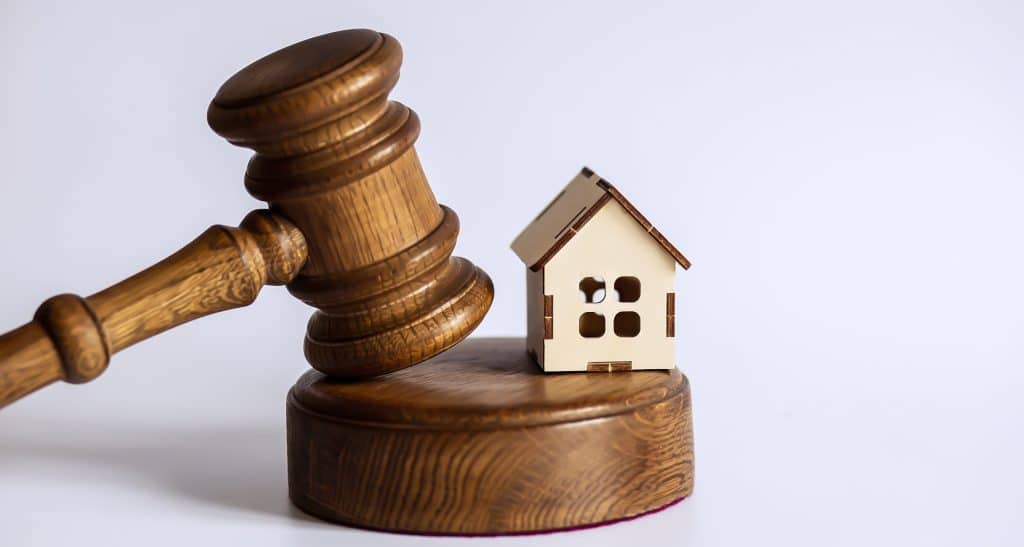Your very first auction can be quite a confronting and confusing moment if you’re not entirely sure what you’re in for. There are a few things to note and look out for, but most importantly you want to take in what’s happening at this auction, so you can be more prepared for the next one.
When you arrive:
Auctions can take place either on the site of the property being auctioned or in-room at a location of the agency’s choice. In-room auctions normally include a number of properties that will be auctioned off one after the other, but everything else that happens on the day is pretty much the same as an on-site auction.
If this is a property you’re seriously interested in purchasing you will likely have inspected the home a few times, perhaps you will have ordered a building inspection, you’ll have an idea of the property’s worth and you would have spoken to your bank or mortgage broker about whether or not it is within your budget. Aim to get a conditional approval or pre-approval from a bank so you are confident in what you can afford and what the bank will lend you.
When you turn up on auction day, you can take another look around and then head to the registration desk to fill out the paperwork (they’ll ask for your ID) and collect your bidding number.
When the auctioneer has arrived and they’re ready to begin, the crowd will be called together to start.
The bidding process:
Bidding can be a little daunting. As the crowd gathers, it’s a good idea to look around and try to get an idea of who you’re up against, they’ll also be holding bidding cards or paddles. You’ll soon be able to tell which parties may have someone bidding on their behalf, such as a parent bidding for their child or a buyer’s agent bidding on behalf of their client.
After a short rundown from the auctioneer on the property and general auction guidelines, they’ll ask for a first bid. This first bid will normally take a while to be called. In some cases, it is a tactic from other buyers who may want to suss out their competition to see who’s brave enough to place the first bid. At other times the first bid may come straight away from a buyer who wants to show they’re confident and ready to close the deal. However, after a long – and very common – silence, the auctioneer may call on a “vendor bid” to get things moving. This vendor bid will be a figure that was previously agreed upon between the agent and sellers to start things off if no one is moving.
Once the first bid is placed the bidding tends to take off rather quickly. The auctioneer will call for another bid; they may suggest the price for the next bid or wait for someone to call it out themselves. Eager buyers will call out their next bid and raise their bidding card. If the auctioneer accepts the bid, they’ll call it out and their assistant will record the figure and their bidding number. Be sure to have your bidding card and number visible when making a bid as the auctioneer needs to be able to see it clearly in order to accept the bid.
Bids can rise in a number of increments but at the beginning, they’re likely to rise in $100,000 or $10,000 bids. The auctioneer may knock back smaller bids until later in the auction, this is simply because they’re looking for realistic bids that will bring the home “on the market”.
On the market and vendor bids:
Not every auctioneer will use the phrase “on the market” but in some cases, you may hear this. What this means is that the bidding has reached the seller’s reserve price – that is, the price they’re willing to start selling at – and anything over this price now has the potential to sell the property. Other auctioneers may use phrases such as “it’s ready to be sold”, “the vendors are ready to sell” etc, while some auctioneers may not acknowledge when the property has come “on the market”. The reserve will often be kept confidential until after the auction.
Vendor bids can come at any time there is a lull in bidding. For example, if the bidding started at $2 million but the reserve is $2.3 million and bidding has lulled around $2.2 million, the vendors may signal to the auctioneer to place a bid on their behalf of $2.3 million to get the property up to what they were hoping for. This may restart buyer bidding or may cause the auction to be passed in if buyers are no longer interested.
Passed in or sold:
If no more bids are being called and the auctioneer feels the auction has peaked, they’ll either use his gavel and call “sold” or they’ll announce that the bidding has not met the seller’s expectation and the property has been passed in.
If you’re the lucky buyer that placed the winning bid, you’ll be asked to sit down with the agents and vendors, sign your contract and pay your deposit (all of which you would have sorted out prior to auction).
If the property is passed in, then it becomes a negotiation between the vendor, the highest bidder and sometimes, the underbidder or party with the second-highest bid. If they can negotiate on the right price, the home may be sold after auction. If no price can be agreed upon, the sellers will re-evaluate their sales campaign.
Other things to look out for:
You’ll notice a few different things going during the auction:
– The property’s agent will often go back and forth between bidders to gauge how they’re feeling, whether they’re still in the bidding or what their limitations might be.
– Other bidders will come in hard and fast at the start and drop off later – this may be because they’ve hit their limit, they’ve lost their confidence or they’re not willing to go up against one of the more confident buyers.
– Some bidders will hang back and come in with big bids towards the end – this is a bidding tactic where these buyers will wait until other bidders have dropped out or moved the property up to a more realistic selling price. Then they’ll likely come in with a bid that they can afford and one which has a higher likelihood of taking the property to “sold.”

